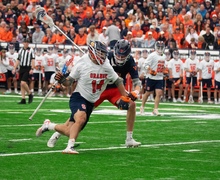Promising future: California public universities turn to social media initiative to provide student financial aid
Lily Barger, a self-described coffee lover, is promising to temporarily give up caffeine for a good cause.
The University of California system has developed a crowdsourcing campaign to help pay for undergraduate scholarships. In the past five years, state funding for the system has been cut by almost $900 million, according to the campaign’s website. Participants, like Barger, are asked to carry out personal promises, which can range from wearing a cow suit to temporarily becoming a vegetarian.
The Promise for Education campaign started last month and goes for six weeks. The campaign has currently raised more than $1 million, according to its website. The program is a response to significant cuts recently made to UC’s state funding, and the money raised will go to financial aid offices — which will then distribute it next fall.
The way that Promise for Education works is people promise to perform a certain task if a specific amount of money is raised, according to its website. Students, faculty, alumni and celebrities have all promised to contribute money for the cause.
Actor Jamie Foxx, for example, has promised to “rap a song like Bill Clinton, President Obama and Monique from the movie ‘Precious,’” according the website. That promise has raised more than $10,000.
Robert Wolfer, president of the UC Riverside Staff Assembly, has promised to wear a suit of armor at a meeting — for $1,000.
Barger said the feedback on the fundraising method has been good so far. Depending on how successful Promise for Education is at the end of the six weeks, UC will possibly do it again next year, she said.
“It’s interesting and it’s a new take for us because we haven’t done it before. I think in some ways it could be very good, but we’re waiting to see how it works,” Barger said.
Jason Simon, executive director for marketing and communications at the University of California Office of the President, said in an email that social media and the crowdfunding method helped draw attention to Promise for Education.
People can contribute to the campaign by making promises or by directly donating money, Simon said. Most of those promising to fulfill tasks have been students, he said.
“We are seeing the reach of social media,” Simon said. However, the largest single donations have come from partners and individual donors, he said.
Simon said that the money raised at the end of the six weeks will be distributed in the fall 2014 semester.
“This program is unique in that it is specifically for scholarships and we are empowering individual users to create their own promise,” Simon said. “It’s a democratization of fundraising in that sense.”
Published on October 10, 2013 at 2:17 am




